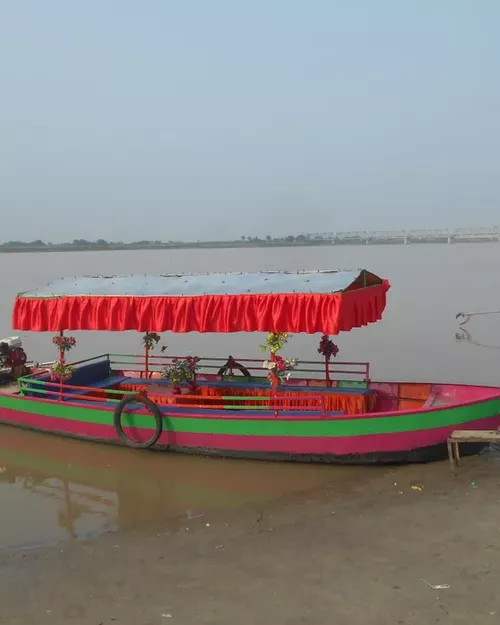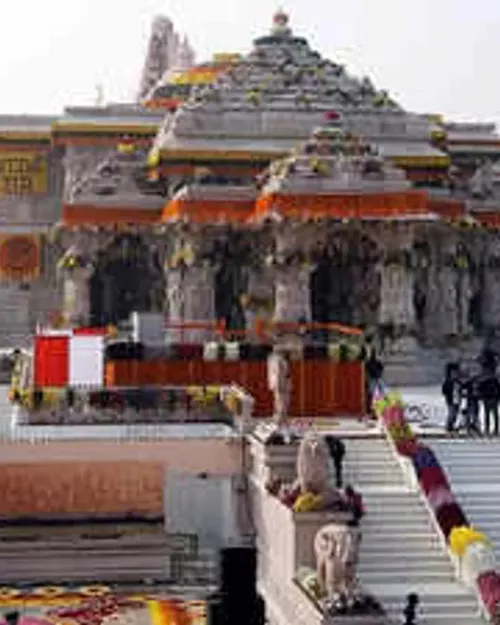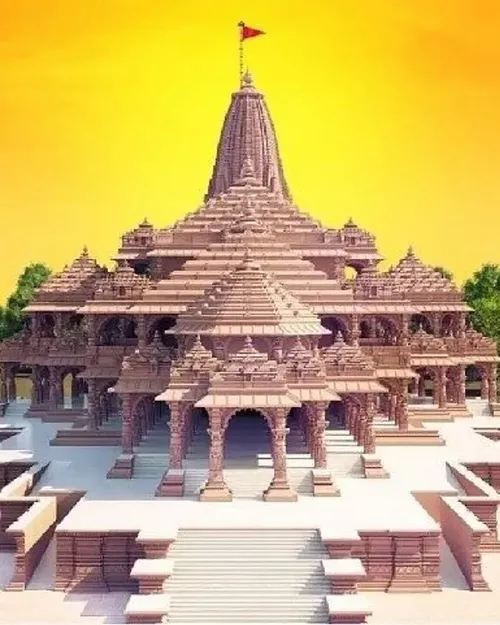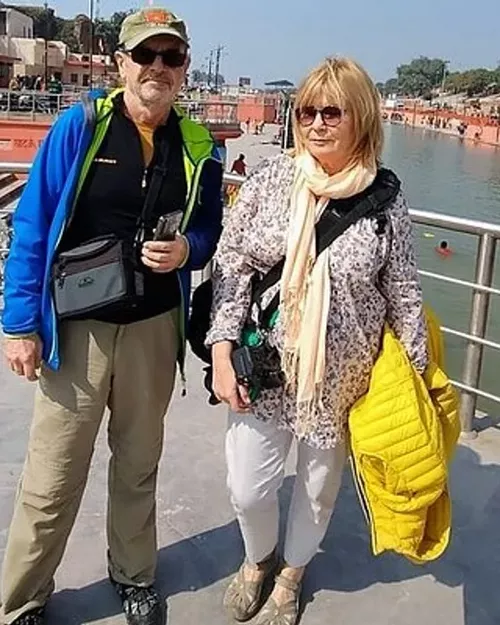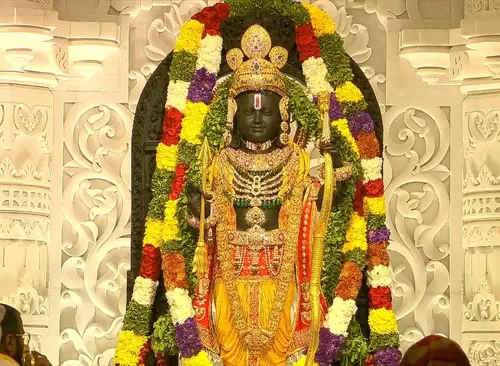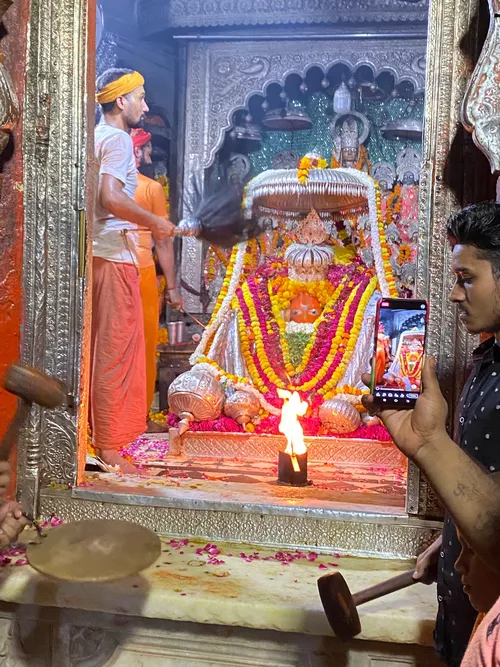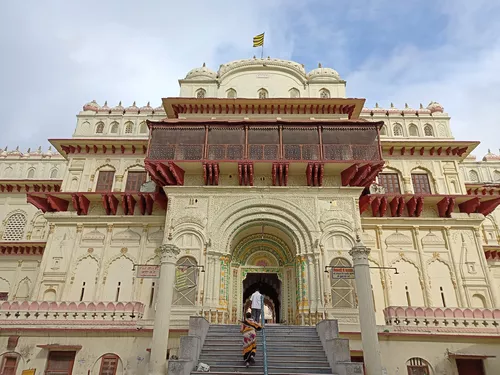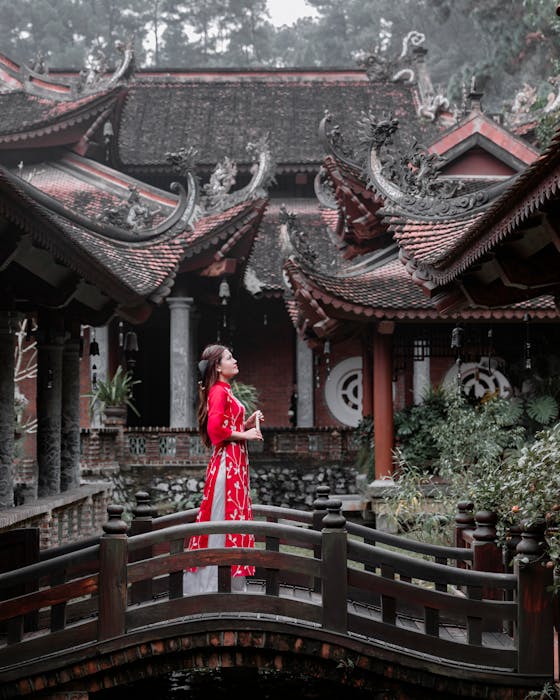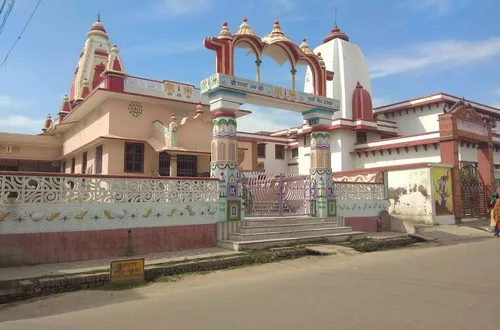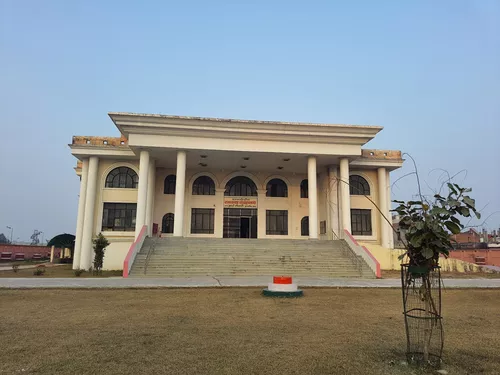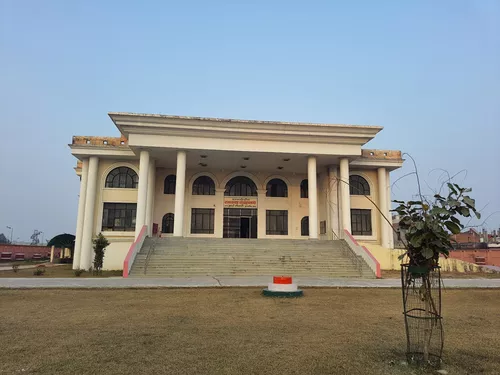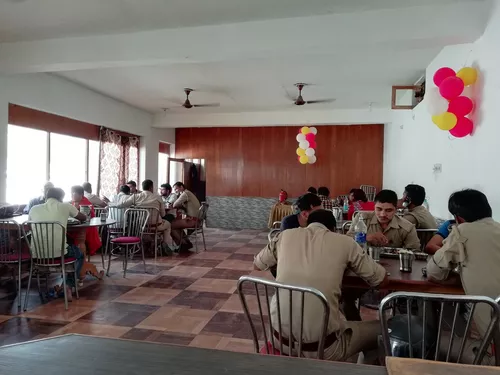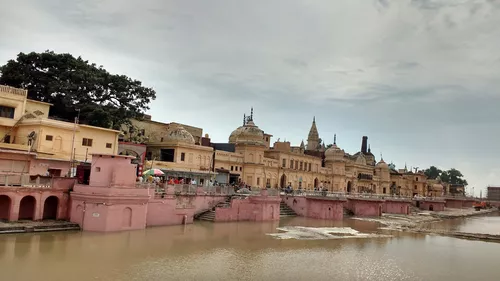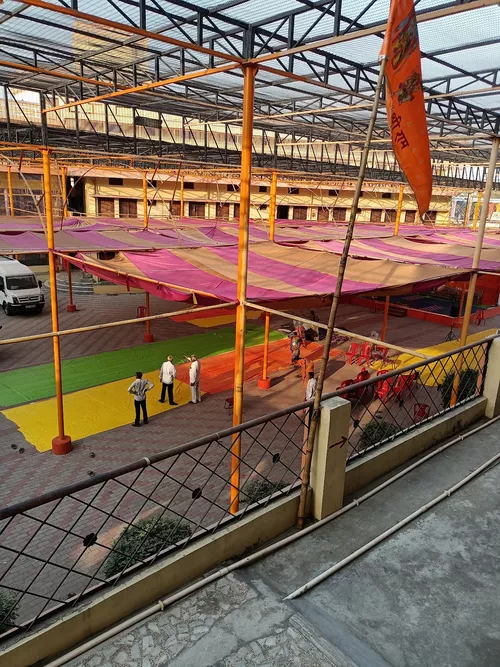Ayodhya is popular for
Ayodhya in next 3 month
Weather in Ayodhya
December in Ayodhya is cool and misty with moderate air quality, making it a pleasant time to visit.
Usual trip duration
A 2-3 day trip to Ayodhya allows you to explore the historical and religious significance of the city. You can visit the Ram Janmabhoomi, Hanuman Garhi, and other temples, as well as learn about the rich cultural heritage of the region.
Very budget friendly
Ideas To Plan Your Trip
Places To Visit
Places To Eat
Frequently Asked Questions about Ayodhya
The best time to visit Ayodhya, a city steeped in history and spirituality, is during the winter months, from October to March. The weather during this period is pleasant and ideal for exploring the various temples and historical sites. The temperature ranges from 10°C to 25°C, making it comfortable for outdoor activities and sightseeing. Avoid visiting during the summer months (April to June) as the heat can be intense, with temperatures soaring up to 45°C. The monsoon season (July to September) brings heavy rainfall, which may disrupt travel plans and outdoor exploration. Planning your trip during the winter months ensures a comfortable and memorable experience in Ayodhya.
Reaching Ayodhya is convenient through various modes of transportation:
| Mode | Details |
|---|---|
| By Air | The nearest airport is the Maharishi Valmiki International Airport Ayodhya (AYJ). It connects Ayodhya with major cities like Delhi, Mumbai, Bangalore, and Chennai, making air travel a convenient option. |
| By Train | Ayodhya Junction (AY) is a major railway station well-connected to various parts of India. Regular trains from Delhi, Varanasi, Lucknow, and other major cities are available, making it an accessible option for travelers. |
| By Road | Ayodhya is well-connected by road to major cities in Uttar Pradesh and neighboring states. National and state highways provide smooth connectivity. Regular bus services and taxi services are available from cities like Lucknow, Varanasi, Prayagraj, and Gorakhpur. |
With multiple options for reaching Ayodhya, travelers can choose the mode of transport that best suits their convenience and budget.
Ayodhya, revered as the birthplace of Lord Rama, boasts numerous temples and historical sites. Here's a list of must-visit places in Ayodhya:
| Landmark | Highlights |
|---|---|
| Ram Janmabhoomi | The most significant site, believed to be the birthplace of Lord Rama. The under-construction Ram Temple is a major attraction. |
| Hanuman Garhi | A temple dedicated to Lord Hanuman, located atop a hill. It is believed that Lord Hanuman guarded Ayodhya. |
| Kanak Bhavan | A beautiful temple dedicated to Lord Rama and Goddess Sita. It is believed to be a gift from Lord Rama's stepmother, Kaikeyi, to Sita after her marriage. |
| Nageshwarnath Temple | Dedicated to Lord Nageshwarnath, the presiding deity of Ayodhya. Legend says it was established by Kush, son of Lord Rama. |
| Treta Ke Thakur | A temple housing idols of Lord Rama that were believed to be used in an ancient Ashwamedha Yagya. |
| Dashrath Mahal | The palace where King Dashrath, Lord Rama's father, ruled. It reflects the rich heritage and history of Ayodhya. |
Exploring these sacred sites offers a deep dive into the religious and historical significance of Ayodhya.
Ayodhya offers a variety of activities that cater to religious, historical, and cultural interests. Here's a list of activities tourists can enjoy:
- Temple Visits: Visit the numerous temples dedicated to Lord Rama, Goddess Sita, and Lord Hanuman to immerse yourself in the spiritual aura of Ayodhya.
- Saryu River Aarti: Witness the evening aarti at the Saryu River, a mesmerizing ritual with chanting and devotional songs.
- Historical Tours: Explore historical sites like Dashrath Mahal and Treta Ke Thakur to learn about the rich history of Ayodhya.
- Shopping: Shop for religious artifacts, handicrafts, and local textiles at the bustling markets of Ayodhya.
- Cultural Performances: Experience cultural performances like Ramlila, a dramatic enactment of the Ramayana epic.
- Boat Ride in Saryu River: Enjoy a boat ride in the Saryu River and see the ghats and temples along the riverbank.
- Attend Religious Festivals: If your visit coincides with festivals like Ram Navami or Diwali, partake in the vibrant celebrations and rituals.
These activities offer a blend of spiritual, cultural, and historical experiences, making your visit to Ayodhya truly enriching.
Ayodhya is strategically located, making it a convenient base to explore other nearby destinations. Here are some popular nearby places to visit from Ayodhya:
| Destination | Approximate Distance | Highlights |
|---|---|---|
| Lucknow | 135 km | Historical monuments like Bara Imambara and Chota Imambara, British Residency, and vibrant markets. |
| Prayagraj (Allahabad) | 165 km | Triveni Sangam (confluence of Ganga, Yamuna, and Saraswati rivers), Allahabad Fort, and Anand Bhavan. |
| Varanasi | 200 km | Ghats along the Ganges River, Kashi Vishwanath Temple, and Sarnath (where Buddha gave his first sermon). |
| Naimisharanya | 90 km | An ancient pilgrimage site mentioned in Hindu scriptures, known for its temples and sacred groves. |
These destinations offer a mix of historical, religious, and cultural experiences, making them ideal for day trips or weekend getaways from Ayodhya.
Ayodhya offers a variety of shopping options, primarily focusing on religious items, handicrafts, and local textiles. Here are some popular shopping spots in Ayodhya:
| Market/Location | Specialty |
|---|---|
| Hanuman Garhi Area | Religious items, idols, prayer beads, and souvenirs related to Lord Hanuman. |
| Rikabganj Market | Local textiles, clothing, and handicrafts. You can find traditional Ayodhya fabrics and garments. |
| Naya Ghat Area | A variety of shops selling religious items, sweets, and local snacks. |
| Main Ayodhya Bazaar | A mix of shops selling clothing, utensils, and daily-use items. It’s a good place to experience local shopping culture. |
When shopping in Ayodhya, bargaining is common, so don't hesitate to negotiate prices, especially in local markets. Be sure to check the quality of the products before making a purchase.
Ayodhya offers a variety of dining options, from traditional Indian cuisine to local street food. Here are some of the best restaurants and street food spots in Ayodhya:
| Category | Restaurant/Location |
|---|---|
| Restaurants | Bikanervala: Known for its vegetarian Indian dishes and sweets. The Ramayana Restaurant: Offers a range of North Indian and Continental dishes. Sagar Restaurant: Popular for its South Indian cuisine. |
| Street Food | Hanuman Garhi Area: Street vendors selling local snacks like chaat, samosas, and jalebis. Naya Ghat: Famous for its variety of street food stalls offering golgappas, aloo tikki, and other local delicacies. Local Sweet Shops: Try the peda and other traditional sweets from local shops. |
When trying street food, make sure to choose vendors that maintain hygiene and cleanliness. Also, be aware of the spice levels, as some dishes can be quite spicy.
Ayodhya offers a range of accommodation options to suit different budgets and preferences. Here’s an overview of the available choices:
| Type of Accommodation | Description | Price Range |
|---|---|---|
| Budget Hotels/Guesthouses | Basic and affordable options with essential amenities. Ideal for budget travelers. | ₹500 - ₹1500 per night |
| Mid-Range Hotels | Comfortable rooms with additional facilities like AC, Wi-Fi, and in-house dining. | ₹1500 - ₹3000 per night |
| Luxury Hotels | High-end hotels offering premium amenities, fine dining, and excellent service. | ₹3000 and above per night |
| Dharamshalas/Ashrams | Religious accommodations offering basic lodging at nominal rates. Suitable for pilgrims. | ₹200 - ₹800 per night |
It's recommended to book your accommodation in advance, especially during peak seasons and festivals, to ensure availability and better rates.
Ayodhya is a city of immense religious significance, and it's important for visitors to be mindful of local customs and etiquette. Here are some guidelines to help you navigate your visit respectfully:
- Dress Code: Dress modestly, especially when visiting temples and religious sites. Avoid wearing revealing clothing. Covering your shoulders and knees is generally appreciated.
- Footwear: Remove your shoes before entering temples and other religious places. Some temples may also require you to remove leather items like belts and wallets.
- Photography: Ask for permission before taking photographs inside temples or of local people. Some areas may have restrictions on photography.
- Public Behavior: Be respectful and avoid loud or disruptive behavior, especially in religious areas. Maintain a peaceful and reverent attitude.
- Offerings and Donations: If you wish to make an offering or donation at a temple, follow the local customs and guidelines. You can purchase flowers, sweets, or other items from vendors near the temple.
- Language: While Hindi is the primary language, English is also spoken in tourist areas. Learning a few basic Hindi phrases can be helpful and appreciated.
- Respect Religious Sentiments: Be mindful of the religious sentiments of the local people. Avoid making comments or engaging in behavior that could be offensive.
By following these guidelines, you can ensure a respectful and enriching experience in Ayodhya.
Ayodhya is generally considered a safe city for tourists. However, like any travel destination, it's essential to take certain precautions to ensure your safety and well-being:
- General Safety: Be aware of your surroundings, especially in crowded areas and tourist spots. Keep your valuables secure and avoid displaying expensive jewelry or electronics.
- Transportation: Use reliable modes of transportation, such as government-approved taxis or pre-booked transportation services. Be cautious of scams and overcharging by unauthorized drivers.
- Health Precautions: Drink bottled water and eat at reputable restaurants to avoid foodborne illnesses. Carry necessary medications and consult your doctor before traveling.
- Emergency Contacts: Keep a list of emergency contacts, including local police and medical facilities. Share your travel itinerary with family or friends.
- Respect Local Customs: Dress modestly and respect local customs and traditions. Avoid engaging in behavior that could be considered offensive or disrespectful.
- Stay Informed: Stay updated on local news and events. Be aware of any safety advisories or travel warnings issued by local authorities or your embassy.
- Security Measures: With increased tourism and religious significance, there are security checkpoints at various places. Cooperate with security personnel and follow their instructions.
By taking these precautions, you can help ensure a safe and enjoyable trip to Ayodhya.
The Saryu River holds immense religious and historical significance in Ayodhya. It is considered a sacred river in Hinduism and is closely associated with the epic Ramayana and the life of Lord Rama. Here’s a detailed look at its importance:
- Religious Significance: The Saryu River is believed to be the same river mentioned in the Ramayana as flowing through Ayodhya during the reign of Lord Rama. Bathing in the Saryu is considered highly auspicious and is believed to cleanse one's sins.
- Association with Lord Rama: According to legends, Lord Rama is said to have taken 'Jal Samadhi' (a form of voluntary death by drowning) in the Saryu River, marking his departure from the mortal world.
- Rituals and Ceremonies: The banks of the Saryu River are an important site for various religious rituals and ceremonies. The evening Aarti (a ritual of worship with lamps) at the Saryu River is a significant event and attracts many devotees.
- Cremation Grounds: The Saryu River banks are also used as cremation grounds, and it is believed that performing the last rites on its banks can help the deceased attain salvation.
- Historical Importance: The river has been a lifeline for Ayodhya, providing water for agriculture and domestic use. It has witnessed the city's growth and transformation over centuries.
- Spiritual Cleansing: Pilgrims often take a dip in the Saryu River as a symbol of spiritual purification and renewal.
The Saryu River is not just a geographical feature but a deeply revered symbol of faith, history, and culture in Ayodhya.
Yes, Ayodhya hosts several significant events and festivals that offer a rich cultural and spiritual experience. Planning your visit around these events can make your trip even more memorable. Here are some key festivals and events to consider:
- Ram Navami: Celebrated to commemorate the birth of Lord Rama, Ram Navami is one of the most important festivals in Ayodhya. The city is decorated, and special prayers and processions are held throughout the day.
- Diwali: Diwali, the festival of lights, is celebrated with great enthusiasm in Ayodhya. The city is illuminated with lamps and fireworks, and special events are organized to recreate the scene of Lord Rama's return to Ayodhya after his exile.
- Sawan Jhula Mela: Held during the monsoon month of Sawan (July-August), this fair celebrates the divine union of Lord Rama and Goddess Sita. Idols are placed on swings (jhulas), and devotees offer prayers and sing devotional songs.
- Kartik Purnima: Celebrated on the full moon day of Kartik month (October-November), Kartik Purnima is another auspicious occasion for taking a dip in the Saryu River and offering prayers.
- Ramlila: Ramlila, a dramatic enactment of the Ramayana epic, is performed during the festival of Dussehra. It is a vibrant and engaging cultural event that attracts large crowds.
- Parikrama: Parikrama involves circumambulating the holy city of Ayodhya. This is a religious practice performed by devotees seeking spiritual merit. There are different types of Parikramas, including the Panchkosi Parikrama.
Attending these festivals and events allows you to immerse yourself in the religious and cultural traditions of Ayodhya.



